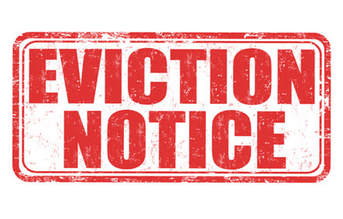By: Barbara G. Hager and Kristie Leff

Under the Common Interest Ownership Act associations have the right to evict problematic tenants who violate the Declaration, Bylaws, Rules or Regulations of the association. Associations can evict tenants even though the association is not the landlord/unit owner, and permission of the landlord/unit owner is not needed. However, in order to take advantage of this procedure, the statutory requirements and prerequisites must be properly implemented. Otherwise, the eviction action may be subject to dismissal.
First, before proceeding with an eviction, sections 47-244(d) and (e) of the statute require that notice of the violations be sent to both the unit owner and the tenant, and that a hearing be held to give the unit owner and tenant an opportunity to be heard. Also, the tenant must be given at least 10 days after receiving notice of the violation to cure the violation.
Additionally, section 47-278 of the statute requires that before instituting a proceeding against a unit owner, the association must send a ten business days’ notice letter via both regular and certified mail noticing a hearing for the purpose of giving the unit owner the opportunity to be heard. While an eviction action against a tenant is not technically the institution of a proceeding against a unit owner, our advice is it is a best practice to have all notices comply with section 47-278 in order to avoid problems. This means that the hearing notices should be sent with 10 business days’ notice by both regular and certified mail.
If the violation is not cured and the association needs to proceed with an eviction action, the action will be filed in Housing Court. Housing Court judges are particularly interested in the tenant receiving proper notice of the specific violations, being given the statutory minimum of 10 days to cure the violation, and clearly being informed the lease is terminated and they will be evicted. Therefore, although the CIOA statute is vague on this point, it is a best practice to be sure notice sent to the tenant complies with the requirements of pre-termination notices (a/k/a Kapa notices), in that, in addition to notifying the tenant of the hearing, it notifies the tenant of the specific violations, provides a minimal 10 day cure period, and clearly informs them that their lease is terminated and they are being evicted.
If the statutory procedures are not followed by the association, and if the notices fail to comply with sections 47-244(d) and (e), and section 47-278, the eviction action may be subject to dismissal. Housing Court judges are very strict in applying statutes, and will scrutinize every aspect of the eviction case to ensure the tenant’s rights are protected. If the case gets dismissed, the association will have to start over, costing time, money, and aggravation. In order to avoid dismissal, be sure to follow all statutory procedures and requirements, and implement the best practices as described.

